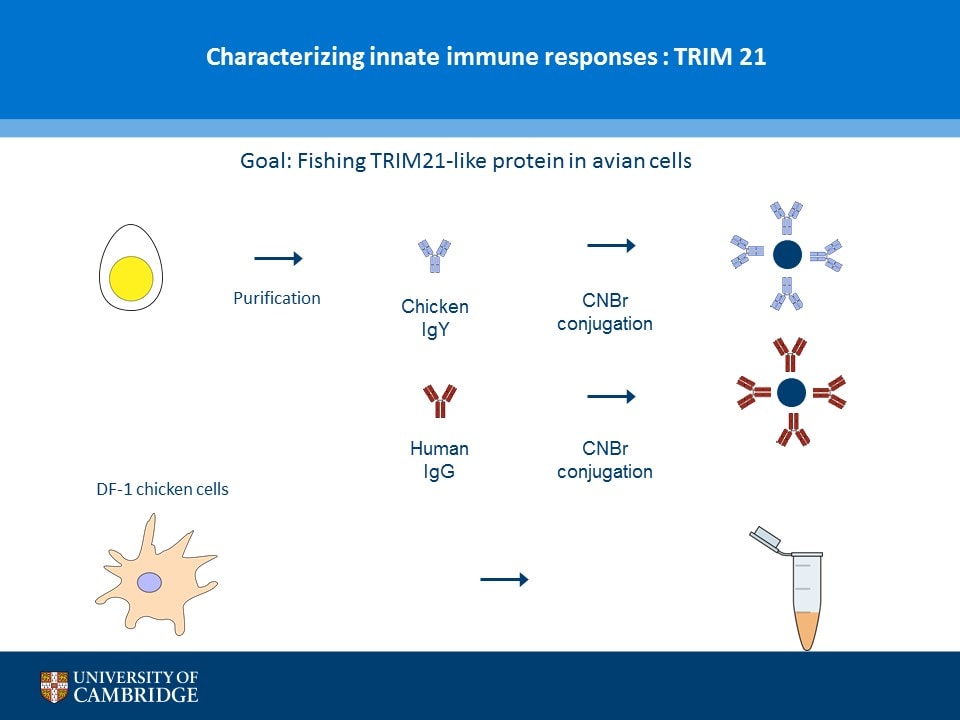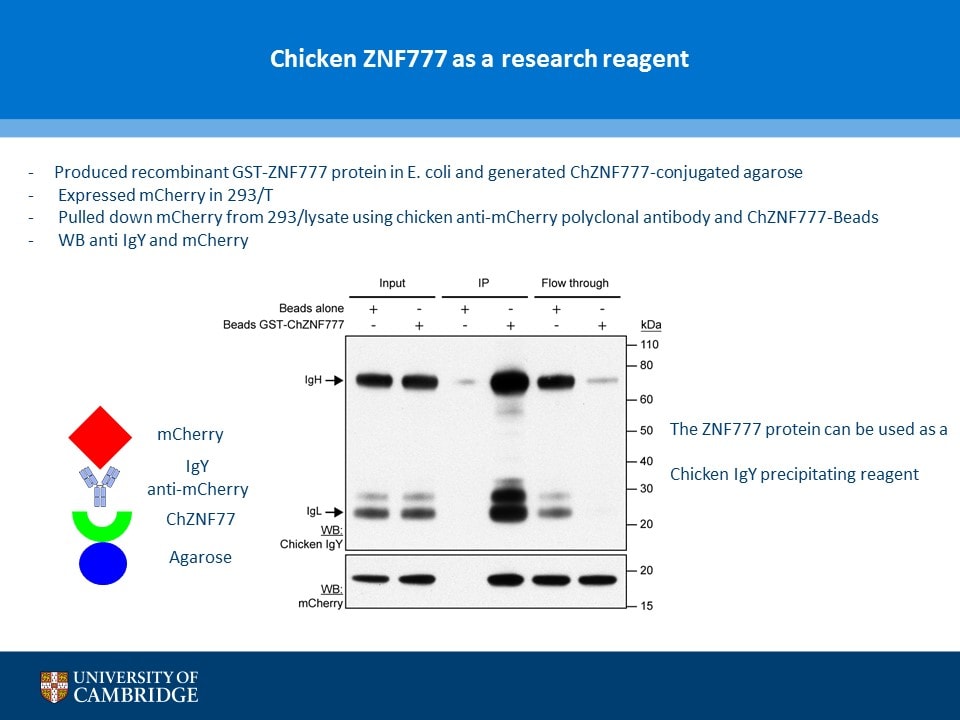Chicken IgY precipitating protein Vector
Invented by Dr Frederic Sorgeloos from University of Cambridge
Invented at University of Cambridge
- Datasheet
- References (0)
- Inventor Info
Info
| Catalogue Number | 152742 |
| Backbone Size (bp) | 3828 |
| Bacterial Resistance | Amplicillin |
| Vector Type | pFS549IG-pOPTG-ChZNF777 plasmid. |
| Antigen/Gene or Protein Targets | Chicken IgY |
| Positive Control | Chicken IgY |
| Relevance |
A novel chicken IgY binding protein was identified through a reverse protein capture approach using sepharose beads either conjugated to chicken IgY (whole molecule) or human IgG (Fc fragment). The conjugates were incubated with a lysate prepared from chicken DF-1 cells (Figure A). The resulting immunocomplex was washed and separated by SDS-PAGE. Protein bands were selected based on their presence in the Beads + IgY lane and absence in the control (IgY, IgG, Beads only and Beads + IgG) lanes (Figure B). The proteins were excised and analysed using Mass Spec. A domain from one of the proteins, ZNF777 (unique to the IgY pull down experiment) was further characterised through a series of co-IP experiments. The domain was expressed with or without a FLAG tag in HEK293 cells and incubated with chicken IgY or human IgG (Figure C). The immunoprecipitates and inputs were analysed by western blot using antibodies against chicken IgY, human IgG or FLAG. Figure D shows that the protein domain when FLAG tagged immunoprecipitates chicken IgY but not human IgG. Experiments without the FLAG tag failed to precipitate IgY or IgG. Subsequent experiments demonstrated that the interaction between the protein domain and IgY is direct and in the submicromolar range (590 nM). A proof of principle study (shown in Figure E) showed that the protein domain when conjugated to agarose serves to capture a chicken polyclonal antibody against mCherry by immunoprecipitation together with its own protein target. Finally these studies were extended to demonstrate that protein domain can be used in co-IP studies (Figure F). |
| Research Area | Genetic Studies Tools |
References
There are 0 reference entries for this reagent.
References: 0 entry
There is no reference for this reagent yet, feel free to use the button below to suggest one.
Add a reference
References: 0 entry
There is no reference for this reagent yet, feel free to use the button below to suggest one.
Add a reference
























